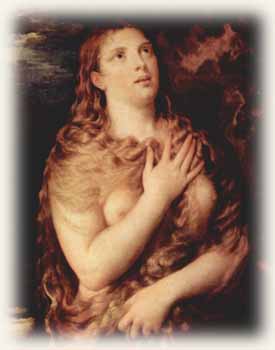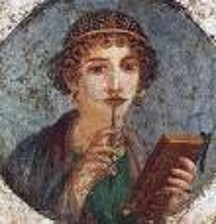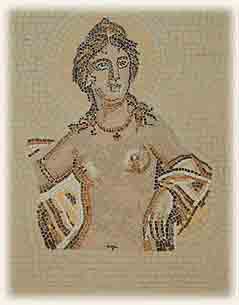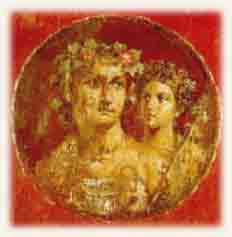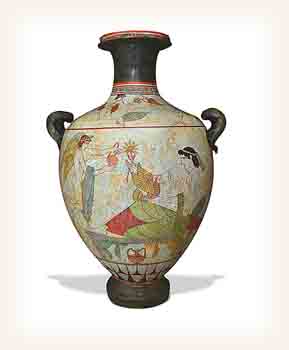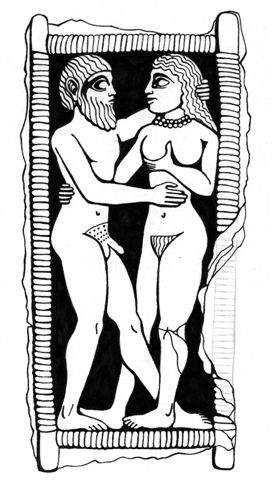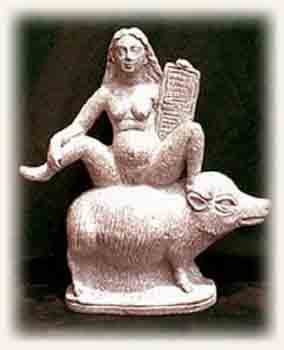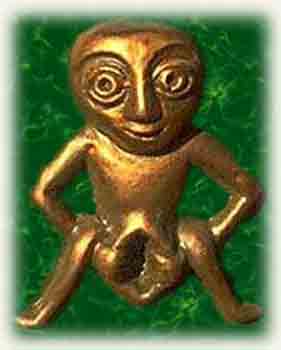The Grapevine Art & Soul Salon
Presentations: Barbara Knott
ESSENCE OF ROSEMARY
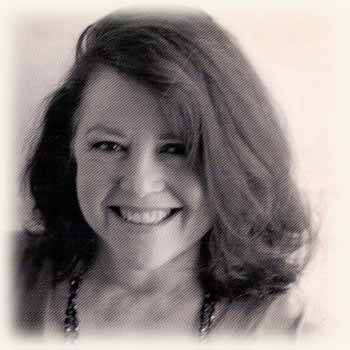
After listening to Rosemary Daniell read her poems at Callanwolde Fine Arts Center on a fine afternoon during the mid-1990s, Atlanta playwright Cary Bynum confided to me while we lingered at the door, both filled with admiration for her work: "Rosemary is the best possible result of how someone who has been a cheerleader might have turned out."
Though she is five decades distant from her cheerleading days at Tucker High School, she has never left behind the energy and enthusiasm she brings to her work as writer and writing coach. Her website opens to a burst of colorful cheers for her and her protégés and their work in the Zona Rosa writing groups that she mentors in Savannah, Atlanta, and throughout the country.
There you will find all sorts of information about her life (she was a high school dropout who has been married four times and who has watched two of her three adult children deal with long-term disabilities), her writing career (she is the author of eight books and numerous published articles and is a frequent speaker and panelist at writing conferences around the United States and abroad), and her groups and workshops (mushrooming now that she has published her most recent book Secrets of the Zona Rosa).
You can read short songs of praise from other writers, including Erica Jong (Rosemary Daniell is an enormously gifted poet, novelist, and nonfiction writer .... She is one of the women by whom our age will be known in times to come), Florence King (Rosemary Daniell's works are among my beloved books ...), Joyce Maynard (Here's a book full of terrific advice and insight for anyone who ever wished she could write, and never knew where to begin. Daniell's highly original approach is equally valuable to a person, like me, who's been writing all her life), Dorothy Allison (Every girl-child should be handed a copy of Fatal Flowers at puberty…. In telling her story, Daniell gives strength to the rest of us), comedian Brett Butler (Reading Rosemary Daniell was a lightning bolt ... She is one of my idols—as a woman and a writer), John Berendt (No one surpasses Rosemary Daniell in defining that irresistible and turbulent phenomenon, of which she is the very soul, Southern womanhood), and Pat Conroy (Rosemary Daniell is one of the great writing teachers I have seen at work in the country ...).
The lively, popular woman followed at first a path that was not uncommon during the l950s when she and I were both teenagers: she dropped out of high school to get married and have a baby. I, in the meantime (four years behind her and 60 miles distant), coached cheerleaders (and athletes) to help them pass English classes, before graduating and going on to college, eventually to receive a PhD from New York University. Largely self-educated, Rosemary, by the time Cary Bynum made his observation, had published two books of poetry, a novel, and three memoirs. My path had crossed hers a few years earlier, when I returned from New York to Atlanta, ready to change from scholarly to creative writing, and engaged her as my mentor.
My first meeting with Rosemary took place in Atlanta at a workshop on proprioceptive writing given by playwright Sandra Deer. As a participant, I read aloud from a piece I had written, and Rosemary, who was in the audience, introduced herself to me at the reception afterwards. I was much attracted to her and went to her next writing group meeting at the home of her sister Anne Webster, not far from where I live. Since then, with her Zona Rosa workshop as a monthly touchstone, I have written a novel, a dozen short stories, a collection of poems, and a mythic drama. I have another novel in progress. Some of the work has been published, some has made the finals of national competitions, and some remains work-in-progress. In the fall of 2004, I started my online journal The Grapevine Art and Soul Salon, where I regularly publish the work of salon members and guest writers. Zona Rosa has been a near perfect catalyst for my artistic writing life.
That Rosemary is a working artist makes her mentorship especially effective, for she models what she teaches, and she makes use of her extensive network of friends and acquaintances in the writing/publishing world to answer the professional needs of her workshop participants. I have intimate experience with how she works as a mentor and plenty to say about her. The challenge is in selection.
There is nothing more difficult for a truly creative painter than to paint a rose, because before he can do so he has first to forget all the roses that were ever painted. Henry Matisse
Faced with a similar dilemma—that is, presenting a profile of Rosemary Daniell—I’ve spent some time in a quandary because so much has been said, and I have no interest in simply adding more breadth to the bulk. How can I go deep? I asked myself as I reviewed “all the Rosemarys that have been painted.” How can I uncover something new about Rosemary? Will it be like peeling an onion? Wrong associations. Can I show her in a dance of the seven veils? Maybe, but I don't want to end up with the head of John the Baptist. What about a descent into the Underworld, like Inanna, required to give up one item of clothing at each of seven gates? Maybe. But the length.... Then I forced myself to abandon these complex images that would require books to render full studies and settled instead on three short paths that I think will offer some new images and insights.
I would like to begin by describing a typical evening at an Atlanta Zona Rosa workshop and then to create a context for Rosemary’s work by looking at her kinship to other writers and to mythological figures that “favor” her. Finally, I will say something about her effect on me, as the example I know best of persons who have come under her influence.
Besides writing poems, fiction, memoirs, and teaching others how to make the best of their writing talents, Rosemary models what it can be like to embody physical beauty and richness of personality into one’s maturity. No crone in her, and no desire to become one. So we always notice what she’s wearing as she settles into her chair in her sister Anne’s living room once each month, surrounded by fifteen to twenty or sometimes thirty workshop participants, one of whom is twenty years older than Rosemary. Between the eldest and the youngest members, in their 20s, there is a quite a spectrum of ages as well as looks and temperaments.
Rosemary has long hair of a color I’ve seen on a Titian painting of Mary Magdalene (a color subsequently called “Titian-red”), and she will be dressed tastefully and stylishly from her wardrobe of dangling earrings, bangle bracelets, soft and silky fabrics, occasional ruffles, a fetishistic collection of high-heeled shoes and from time to time, a pair of pink cowgirl boots. She wears clothes that show her good figure: sleeveless tops, low necklines, and long slit skirts. Once during the winter, on her way to New York to meet with editors, she went by a local thrift shop where she saw a vintage full length mink coat with puffed sleeves like one she used to own and bought it to wear in the Big Apple. She defines for herself what is chic.
She may have found her dominant color motif in a lipstick that appeared in the 1950s called “hot pink.” Tints of pink are everywhere: in her clothes, her notepads, pens, folders, totes and tee shirts and, of course, in the name she gave to her writing groups: Zona Rosa, the pink zone, after a suburb of Mexico City historically associated with art and sex and wildness.
Zona Rosa meetings start at 6:00 p.m. and last until l0:30 or ll:00. That amount of time already suggests that her temperament is generous rather than stingy. She spends more than she hoards, or she hoards for the purpose of laying out lavishly what she has to offer. Rosemary usually begins with an hour of talking about the treasure of tips and tid-bits she has gathered during the previous month that have to do with living well, writing, and art. She passes around a multitude of articles and flyers related to interesting people, to writing, and to conferences and workshops, copies of magazines where work might be submitted, and book reviews by Zona Rosans.
She addresses newcomers by speaking directly to each one in front of the group, using the second person pronoun to construct a verbal mirror in which she sketches the visitor to herself as well as to the audience. She then invites that person to speak of herself and her interest in writing.
Often, there is a special guest, someone who has published or is in the publishing business. These guests give invaluable information and impressions to the group about the process of writing, the business of writing, and the art of writing. Visiting authors always read something from their work. Before that featured event, Rosemary reads short pieces turned in to her by members of the group. These often take the form of “exorcises,” a name she gave to suggestions she makes for writing into consciousness some thought or feeling or set of feelings that may be lurking in the back of the mind waiting to sabotage a writer’s work.
Along about 8:30, there is a break that might well be called a party. Food and drink are brought out, some from bags and boxes and some from Anne’s roomy refrigerator, to the kitchen table, turning it into a groaning board fit for Thanksgiving or Christmas. There are bottles of wine and diet Coke, homemade tapenades and gourmet crackers, gumbos and salads, finger foods and casseroles, from personal kitchens or selective shops, and desserts to make a thin person swoon. When Rosemary, with all good intentions to run an orderly show, gets ready to reconvene, it is near impossible to break through the noisy expressions of good spirit and hilarity that roll out of the kitchen. Never mind. One or two of the more serious-minded members gather the amiable though unruly writers, or Rosemary makes her way through the chaos wielding a flashing wand given to her by a thoughtful Zona Rosan. We all love her, you see. And each other. And the night. And the work and play of making art out of writing.
The last hour is given over to her reading and reviewing longer pieces of work. Glancing at the person whose work is being read aloud, one can see that writer glowing and growing more savvy, more confident, more authentic as a writer. Rosemary may ask if the group at large has any comments, but I think her habit of handling the critiques herself makes impossible the inappropriate accent on negativity that bedevils some writing workshops. She offers both warm praise for what’s good about the piece, and there is always something good, along with detailed suggestions for improving what has not yet matured. And she holds us to very high standards. Rosemary has the gift of knowing precisely what a novice needs to hear, whether prodding or praise, at exactly that moment in her study and practice in the art of writing. She handles deftly, with minute attention and intuition, feeling and insight, the creativity of people who participate in her groups.
The political accent in Zona Rosa can be seen in the title of Rosemary’s 2001 book of essays, Confessions of a Female Chauvinist. Here I want to point out, for the sake of showing that Zona Rosa groups tolerate a variety of temperaments, that I would not have chosen an all-female group had it not been for my personal attraction to Rosemary. Despite the dictum she quotes from time to time, If you’re not a feminist, you’re a masochist, I refuse to call myself any kind of ist. I have known some women, like some men, to be petty, dumb, ugly, bossy, opinionated, and sorry as well as profound, smart, beautiful, egalitarian, thoughtful and full of merit. I do not feel I have suffered much from competition with men. I genuinely like men and have been fortunate to find their individuality more interesting than the stereotypes that have emerged, admittedly, from real encounters. For me, the challenge is to become fully human, and to do that requires cultivating psychological androgyny, or the claiming for oneself the traits culturally assigned to separate genders. But I admire and respect the work of healing wounds in individuals and restoring cultural values that have become repressed. Of this work, there is plenty in Zona Rosa.
Rosemary also likes men, and men are certainly attracted to her, but the passions of her teaching mind are aroused mainly by women. She has her reasons for designing her workshops for women. Here’s how she answered a question about that (from her website):
I had decided that the first group should be all women because I had observed how women-- especially traditional women--changed and became more inhibited when a man entered the room. I wanted this group to be a place where women would be free to be themselves.
The chauvinism is an accent: free is the more substantive word. Rosemary is actively and skillfully engaged in freeing women from all that holds them back in realizing their potential as writers. In her Zona Rosa workshops and groups, she makes a place for smart, interesting women to be together, to hear their writing read aloud and critiqued, to cheer each other on, to celebrate what it means to be artists and to be female. What Rosemary is and does hearkens back to a pagan world in which earth, body, and woman have high value.
In this venture of leading groups of women (who all have girls inside them), she evokes the Greek goddess Artemis: virginal, focused, productive, and protective (Artemis has cult followers of girls aged nine, called "she-bears," who wear buskined boots and carry bows and arrows). But Rosemary’s style is not virginal, so let’s consider two other figures, also from Greek culture, who radiate images of relational ripeness.
One is Sappho, who wrote poems and instructed women in the art of poetry during the 7th century BCE. In a delightful and profound book by Ginette Paris called Pagan Meditations (1986), we learn that Sappho was the dean of a “semi-religious school” or “university” which prepared young women for adult life. “She taught them the art of expressing themselves in poetry, dance and music—and the art of loving, which was considered fundamental to the quality of life. A teacher beloved of all her students, celebrated and respected in all of Greece, she was a kind of Socrates for young women” (39). Because she was known throughout Greece as “the Lesbian” (from the island of Lesbos), and because she wrote some of her poems to and about her female students, she has become associated with same-sex love in our own time (so much so that the islanders have recently protested the association of Lesbos with lesbianism). In fact, Sappho was married and wrote many wedding hymns. She seems to have refused gender typing.
Most important, Sappho became a cultural carrier for the freedom of women to voice from the depth of their passions both soulful and sensual speech. Here is one of many possible examples to be found among the fragments of her extant poems (from Sappho, trans. Mary Barnard, #53): “With his venom/Irresistible/and bittersweet//that loosener/of limbs, Love//reptile-like/strikes me down.”
In these brief lines are constellated a powerful image of falling in love, in which it hardly matters whether the object of one’s fascination is male or female. This woman, this poet, this mentor understands the rule-slaying nature of human experience in relationship.
Do we need such an understanding in our mentors? I say yes, we do. A few writers in our own time have made passionate life the theme of their work. D. H. Lawrence and Doris Lessing come to mind. But by and large, we are insufficiently instructed in these matters.
Lawrence understood that to find a cultural paradigm for living a passionate life, we have to go back beyond the Judeo-Christian overlay of thought, for we cannot find among the followers of Yahweh and Jesus much sustenance for spontaneous and vivid sensual attachment to women, to the body, or even to this world. Pagan by temperament, Lawrence looked to Pan and Aphrodite and Isis for the springs of his own passion. And Lessing, for whom Lawrence was a mentor, lived and wrote about a life rich in passions of the heart, body, and mind.
Rosemary Daniell is acclaimed as a women’s cultural carrier in our time, as can be seen in the quotations given above from her book blurbs. Although her poems are often filled with images of pain and violence, here is one from A Sexual Tour of the Deep South (56) that puts her in touch with Sappho’s lyricism and with the image of love’s loneliness: “Talking softly of stars/we lie within our beds.//Nausea pulses my throat—/galaxies make me faint, thinking how we float—/light things in shadowy sheets./Later, wakening/from dreams of peacock wings/fluttered to dust ten thousand/years ago, I move through/quiet doors. In darkness,/my back presses the shivery/earth—/with the old bone of/an animal, I love myself.”
This poem is a timeless look at the night and its arousal of love needs, a theme so important to the lives of women and men, and particularly in the understanding of desire as it manifests in the body and mind of women. Note that both Sappho and Rosemary are speaking in the first person. Ginette Paris links Sappho to the goddess Aphrodite and suggests the necessity of poet and goddess to the culture of women in our time: Over the past fifteen years, the artistic productions of women have grown fantastically. It is no accident that the proliferation of feminine and feminist literature has occurred through, and coincidentally with, the liberty women have taken in writing in the first person. (Pagan Meditations, 48)
The movement Paris is describing can be seen as part of the cultural upheaval of the 20th century in which we have seen reference to “the return of the repressed” in psychology and in art. Zona Rosa groups are cauldrons in which crippling repressions are given artistic expression. Rosemary’s book Secrets of the Zona Rosa: How Writing (and Sisterhood) Can Change Women’s Lives (2006) offers a compendium of examples. In this focus on repression she has not changed her subject matter or her purpose since her first book of poems was published.
The evening we met, I learned that Rosemary was the author of A Sexual Tour of the Deep South, a book I’d heard of whose title is compelling even when one discovers that it’s not an advertisement for a vacation into promiscuity but rather a book of poems. The Great Speckled Bird, Atlanta’s alternative newspaper back in l964 when the book came out, called it “…one of the most honest and artistically profound statements of a woman’s sexuality ever written.”
That response was exceptional. More typical were walkouts from her poetry readings and harsh criticisms from male editors and poets who found her close attention to sexual feelings and to female biology both messy and repulsive. There were sufficient women, though, and an occasional man, who approached her after her readings to assure her that she was speaking honestly and eloquently about matters that were important to them. The drift of the women's comments was toward this declaration: You wrote about what I've always felt but have not been able to say. Rosemary tells the story of one woman who, after a poetry reading in Wyoming, expressed her gratitude in a gesture: without speaking, she put a jade ring on Rosemary's finger.
In her writing, Rosemary continued to let her poems tug and tear at the genteel veil worn over the face of Southern belledom until she made it possible for other women to see what she was looking at: the stunted personality that results from living by rules when the rules don’t serve all that is deeply human, including desire, longing, and passionate experience. Her voice speaks for the rebel, the sinner, the tramp, the outrageous, the outlaw, the disenfranchised and disabled--and the free.
One of the most remarkable things about her is that there is no trace of victim to weigh her down. Her own capacity for enduring life’s hardness remains largely invisible unless you know her work, for she is a natural optimist, one of those desirable people who enter rooms and immediately raise the level of vitality and joy by several degrees.
There’s something more than the significance of writing in the first person that can be gleaned from looking into the past, back beyond the Judeo-Christian influence on Western culture to pagan Greece and Mesopatamia, where woman was seen as a vehicle of divinity rather than a repository of sin. Despite the many fine teachings about compassion and love of one’s neighbors presented in Christianity, the role of women has tended to remain in the shadows along with a denigration of the flesh and of the earth as our bodily home.
Of the two Marys who are so strongly represented in the New Testament, one is a saint and the other a sinner. This split in the Western way of seeing women is sketched out memorably in Leslie Fiedler’s Love and Death in the American Novel (1960), where we see how difficult it has been, not to say impossible, for Western male writers to create three-dimensional female characters. Only a few come to mind: Anna Karenina, Emma Bovary, Ursula Brangwen and Constance Chatterley (see how Lawrence multiplied the number). The fully realized sexual women created by Tolstoy and Flaubert may account for their works being frequently named among the greatest novels ever written; for certain, Lawrence’s and Lessing’s female characters help to account for their lasting readership.
I have already connected Rosemary with Mary Magdalene through the Titian painting of the redhaired Magdalene I mentioned earlier. Mary Magdalene lived a life of passion that became sublimated and spiritualized in her contact with Jesus. To find other, more generously treated examples of archetypal kin for Rosemary Daniell, one needs to go farther back, to Sappho’s time when Aphrodite offered a paradigm for women who were temperamentally allied with love and sex and beauty, and beyond that, to images of Ishtar and Inanna that radiated out from ancient Uruk and Babylon in the Middle East.
Let’s look for a moment through the eyes of poet Denise Levertov in her “Song for Ishtar”: “The moon is a sow/ and grunts in my throat/ Her great shining shines through me/ so the mud of my hollow gleams/ and breaks in silver bubbles.” Already in the first stanza we have the stuff of ancient women’s mysteries: the linking of moon/star/sow/mud/darkness. Now she adds woman and poet to the mixture: ”She is a sow/ and I a pig and a poet….” And desire and laughter: ”When she opens her white/lips to devour me I bite back/ and laughter rocks the moon….” And finally, sex: “In the black of desire/ we rock and grunt, grunt and shine….”
In other words, it is the very stuff that revolted some of Rosemary’s male readers who wished, at best, that she would keep to herself her images of “women’s mysteries” instead of flaunting them. I am reminded of Jonathan Swift's aversions, revealed in a line from one of his poems that expresses his male character's dismay at finding out the horrible truth about his woman: "Nor wonder how I lost my wits;/ Oh! Caelia, Caelia, Caelia shits." Swift was so full of satiric humor that we don't know how he himself felt, but his excremental preoccupation suggests an aversion to the body and particularly to the bodies of women. William Butler Yeats, in a similar image, gives his character Crazy Jane paradoxically a more wholesome view when, after listening to the Bishop who is suggesting that she, as an old woman now, surely is ready to climb out of the "foul sty" of lustful desire and prepare to enter God's holy mansion, she reminds him that love has "pitched his mansion in/ The place of excrement." She tells the Bishop, "Fair and foul are near of kin,/ And fair needs foul." Yeats concludes the poem with a far-reaching argument for passion and the suffering that makes us soulful: "For nothing can be sole or whole/ That has not been rent."
I suppose I shouldn't even mention how in ancient times, we are told, women mixed menstrual blood into the soil of the grain fields. No doubt, there are mysteries that need to be kept, but discretion is not the same as repression, and one doesn't want to encourage repression.
Once upon a time, poets were able to talk literally about sexual parts and at the same time to make of them powerful metaphors. Inanna, associated with the evening star, who once was supreme among Mesopotamian deities, in an ancient fragmentary text called “Plow My Vulva,” awaits the arrival of the shepherd Dumuzi whom she has named as her husband and king over the land. She praises her vulva, reviews her selection of the king, washes and adorns herself, and then receives Dumuzi into her holy lap: “My vulva is a well-watered field. Who will plow it?” The answer is “Dumuzi will plow it for you.” She blesses him, and he commences to plow, and thus the couple sets in motion a ritual of sacred marriage that will be kept for centuries to come.
Aphrodite (also known as Venus in her Roman configuration) inherits many features of Ishtar and Inanna. She is associated with nudity and sexuality. Further, she represents love so passionate that it knows no boundaries: it sometimes breaks societal rules and can, by its propensity for triangles, end up wreaking havoc in marriages. The word erotic is taken from the hot desire inspired by Aphrodite’s son Eros, who made trouble in love for the gods as well as for mortals. Aphrodisiac and venereal are other words that belong to this goddess. She moves at ease in the profane world as well as in the world considered sacred by the Greeks, where philosophy, theater, and art offer multifarious moments of reflection.
Not so well known about Aphrodite is her association with the symposium which was, in its earliest form, a drinking party filled with entertainment and serious talk. Her divine counterpart there is Dionysos, god of wine and theater. He, known as the loosener because of his association with wine, and she, the carrier of sacred and profane love and beauty, inspire passionate togetherness in conversation.
What a mentor offers unfolds from temperament as well as talent and training. Temperamentally, Rosemary Daniell sits with Aphrodite at the symposium, reflecting the radiance of the goddess of love and beauty, gracing the banquet of life with lively conversation. Her talent tends toward words, and her conversation makes her partner eloquent: she listens, affirms, and moves the conversation onward, often by bringing out qualities in the listener that the listener may not have known were there. It follows that this eloquence can be captured in writing. That theme is the content of her teaching in Zona Rosa workshops.
To be with Rosemary is to enter into relationship. The women she mentors in her workshops usually have already accumulated significant life experience. Her task then is to teach them courage and to nurture their creativity. Here is James Hollis, from Finding Meaning in the Second Half of Life (119), on the necessity of opening up to another (in my present example, to a mentor):
In the encounter with the other, we begin to realize the immensity of our own soul; by encountering the immensity of the other's soul, including the parts we do not like, we are summoned to largeness, not the diminishment that our infantile agenda seeks. Like personhood, the gift of relationship is not so much a gift as it is an achievement to be earned.
I have heard Rosemary express one way of being in the world: take what you want and pay the price for it. If that sounds ruthless, it is also courageous. That is not a conclusion I reached during my young life, though I feel I understand it now.
Rosemary and I both had fathers who sacrificed a stable family life for alcohol. My way of dealing with my outlaw father was to prove my respectability through education and to behave as if I were as genteel as the next person (in a cotton mill town, that isn’t impossible, though it does considerable damage to one’s spontaneity). I preferred not to speak of my family problems. Rosemary chose another way: she talked about hers and wrote them into art. Her most beautiful book, in my opinion, is Fatal Flowers, about her mother’s sacrifice of a writing life and subsequent (perhaps “consequent”) suicide.
My own temperament had been deflected from its natural spontaneity into a wariness of the world and a desire to be good and make good. I was encouraged in this by early mentors, culminating in the influence of college teachers who all seemed to believe that unless one discovered one’s artistry in childhood like Mozart and Keats, one could never be an artist. In those days, in those places, one had ostensibly two options: to be a scholar or—with the rare blessing of the right muse—to be an artist. Naturally, anyone enrolled in college English classes was a scholar and, importantly, was not an artist. I sloughed off that notion in my early thirties by becoming an actress, but my writing had to wait. By the time I met Rosemary later in midlife, I knew that although I had written a master’s thesis and was then writing a doctoral dissertation, I couldn’t write fiction or poetry until I trashed some bad ideas and removed some self-imposed barriers. My encounter with Rosemary was the antidote I needed for the illness of reticence. Quite simply, she had more courage than I did. I read her poems and said to myself several times, now I don’t have to be the first to do this or that…Rosemary has already done it. Moving behind her on the writing trail and also in her present company allowed me to relax and express myself spontaneously.
Encountering the immensity of Rosemary’s soul, I was summoned away from the diminishment of my “infantile agenda” and toward expressing the generosity of my life experience. That soul movement made possible, among other things, an appreciation of my father’s virtues as an outlaw with a passionate and poetic temperament.
Her “immensity of soul” includes another feature, the most attractive and valuable of all: humor. 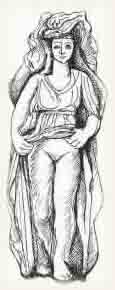 One cannot describe her or Zona Rosa without calling forth the laughter generated in the way we women entertain each other. What jokes women tell when they are not inhibited by the presence of men! I’ve found a mythological figure that I think exhibits the archetype to create a background for this blessed form of catharsis: The Greek myth of Demeter, goddess of grain, concerns, of course, her loss of her daughter Persephone who was abducted by Hades and taken to live in the Underworld as his Queen. The story details how she wins her daughter back for a portion of each year (in that way accounting for seasons of withering and greening). One mythologem concerns the phase in which the depressed Demeter is wandering the earth, made infertile by her unwillingness to let things grow. She is interrupted by the appearance of Baubo, a mature servant woman who raises her skirts, shows her genitals, and causes Demeter to break into laughter, thus beginning the cure for both depression and infertility: as if there is something so outrageous in sex that a disease of the spirit can be cured with the medicine of laughter by way of the genitals. Her name is said by some to mean "belly," perhaps because of the belly laughs she provokes. She is treated sometimes as a goddess, and in rites of Demeter, she appears as the mother goddess's sacred fool, scattering obscenities full of humor among the participants.
One cannot describe her or Zona Rosa without calling forth the laughter generated in the way we women entertain each other. What jokes women tell when they are not inhibited by the presence of men! I’ve found a mythological figure that I think exhibits the archetype to create a background for this blessed form of catharsis: The Greek myth of Demeter, goddess of grain, concerns, of course, her loss of her daughter Persephone who was abducted by Hades and taken to live in the Underworld as his Queen. The story details how she wins her daughter back for a portion of each year (in that way accounting for seasons of withering and greening). One mythologem concerns the phase in which the depressed Demeter is wandering the earth, made infertile by her unwillingness to let things grow. She is interrupted by the appearance of Baubo, a mature servant woman who raises her skirts, shows her genitals, and causes Demeter to break into laughter, thus beginning the cure for both depression and infertility: as if there is something so outrageous in sex that a disease of the spirit can be cured with the medicine of laughter by way of the genitals. Her name is said by some to mean "belly," perhaps because of the belly laughs she provokes. She is treated sometimes as a goddess, and in rites of Demeter, she appears as the mother goddess's sacred fool, scattering obscenities full of humor among the participants.
Baubo has a counterpart in the Irish mythological figure, Sheilah-na-gig, who is most often depicted in this posture: naked, she sits on her haunches and spreads her legs and with her fingers, gently pries open the vulva so that all who have eyes can see....
Obviously, this amplification of Rosemary’s archetypal ancestors might generate lengthy discussion, and I hope it will, outside the scope of this article. To place her among them seems important to me, so that her work can be seen, even by males, not as a brash, modern need to “let it all hang out,” but as a reaching back into our most ancient images of femaleness for antidotes to modern repressions of the feminine. In that sense, she provides work and a way of working that rectifies inadequacies and imbalances in our ability to serve the whole person that makes a woman or a man in our time.
Those who work with Rosemary Daniell enter an educational and psychological stream in which they are actively engaged in earning both personhood and relational merit, and no matter that they pay her a fee, they experience that merit as a gift, both from her and from the inner mentor that she mirrors. They make art as well. The success of her protégés, the number of whom are published writers now exceeding 50, together with her own success, puts her in danger of becoming Establishment.
May 8, 2008: picture Rosemary at the 23rd Governor’s Awards in the Humanities Luncheon at the Old Georgia Railroad Depot, bowing her head so that Georgia House Speaker pro tem Mark Burkhalter can place around her neck a wide ribbon holding a silver medallion, inscribed with her name and the date, while the presenter reads aloud her accomplishments. The Zona Rosans with her are sure the governor has not read her work, though he (or his surrogate) has been made aware of her service in bringing poetry and creative writing into Georgia schools, prisons, and mental institutions, and of her contributions to literary awareness through the Zona Rosa groups.
A lifetime of reflection makes use of many mirrors: parents and siblings, friends and lovers, teachers and trainers, employers, colleagues, communities. We reserve the term mentor for those from whom we learn important things about living and working and whose influence on us has depth and endurance. I have used the word only once before in writing about my own life, to describe actor/teacher William Hickey in an earlier issue of The Grapevine. I may not use it again. But I feel fortunate to have had two mentors, both of them artists who, to achieve full satisfaction, found it necessary to teach others what they had learned about life and art.
From cheerleader to wife and mother, to poet and lover and friend, to mentor to panelist to speaker, to “humanities hero”—Rosemary Daniell has led a rich life, and she’s written about it all. Here’s hoping others will join me, not in a Ra! Ra! (though that’s generally welcome), but in a quiet and considered appreciation of this woman’s accomplishments as a person and an artist.
LINK TO ROSEMARY DANIELL'S WEBSITE:
BOOK COVERS
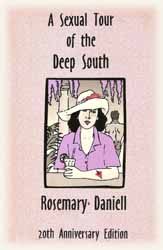
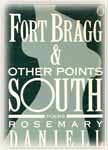

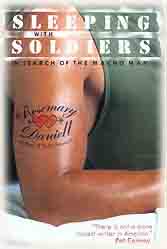
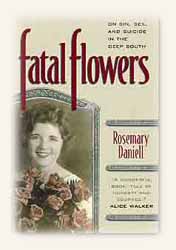
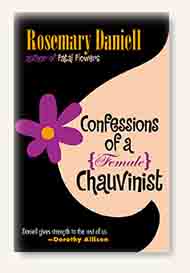

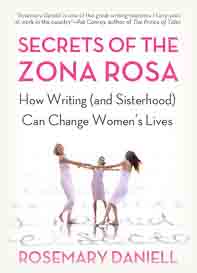
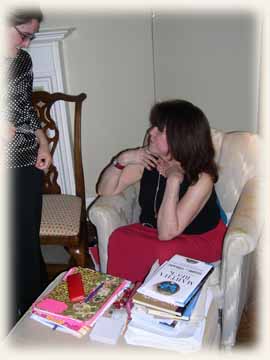
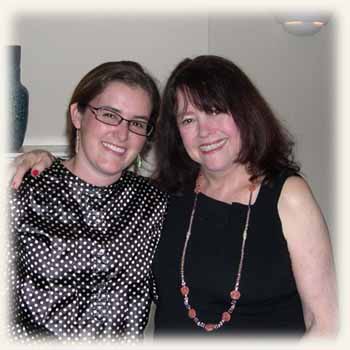
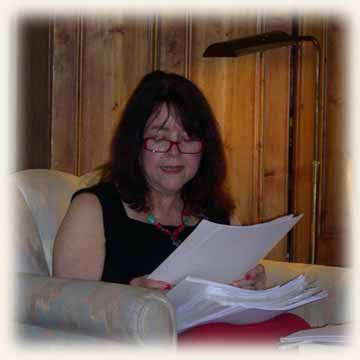
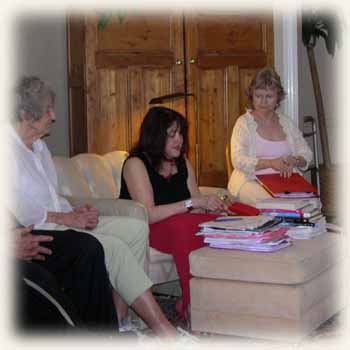
SCENES FROM ZONA ROSA ATLANTA
SOURCES (all recommended for your reading pleasure):
_______. Confessions of a Female Chauvinist. Athens, Georgia: Hill Street Press, 2001.
_______. Fatal Flowers: On Sin, Sex, and Suicide in the Deep South..Athens, Georgia: Hill Street Press, 1999.
_______. Fort Bragg and Other Points South. New York: Henry Holt and Company, 1968.
_______. Secrets of the Zona Rosa: How Writing (and Sisterhood) Can Change Women's Lives. New York: Henry Holt and Company, 2006.
_______. Sleeping with Soldiers: In Search of the Macho Man. New York: Holt, Rinehart and Winston, 1984.
_______. The Hurricane Season. New York: William Morrow and Company, Inc., 1992.
_______. The Woman Who Spilled Words All Over Herself: Writing and Living the Zona Rosa Way. . Boston: Faber and Faber, 1997.
Drawing (above) of Baubo from www.goddess.com.au
Fiedler, Leslie. Love and Death in the American Novel. Cleveland, Ohio: Meridian Books, 1960.
Hollis, James. Finding Meaning in the Second Half of Life: How to Finally, Really Grow Up. New York: Gotham Books, 2005.
Levertov, Denise. "Song for Ishtar." http://www.poetryfoundation.org/archive/poem.html?id=171231
Lubell, Winifred Milius. The Metamorphosis of Baubo: Myths of Women’s Sexual Energy, foreword by Marija Gimbutas. Nashville: Vanderbilt UP, 1994.
Paris, Ginette. Pagan Grace: Dionysos, Hermes, and Goddess Memory in Daily Life. Putnam, Connecticut: Spring Publications, Inc., 1990.
Paris, Ginette. Pagan Meditations: The Worlds of Aphrodite, Artemis and Hestia. Dallas, Texas: Spring Publications, Inc., 1986.
Sappho, trans. Mary Barnard. Berkeley, University of California Press, 1958.
Swift, Jonathan, "Cassinus and Peter." http://www.online-literature.com/swift/3506/
Wolkstein, Diane and Noah Kramer. Inanna, Queen of Heaven and Earth: Her Stories and Hymns from Sumer. New York: Harper and Row, 1983.
Yeats, William Butler, "Crazy Jane Talks with the Bishop." http://www.poemhunter.com/poem/crazy-jane-talks-with-the-bishop/
ILLUSTRATIONS
